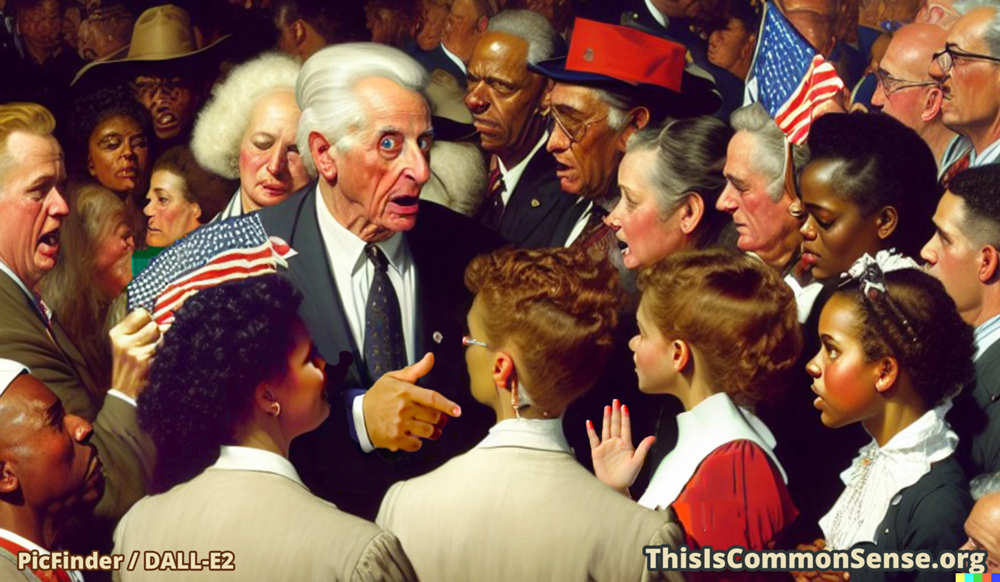Virtually every election-related reform one could imagine was discussed this week at INC ’23 in Austin, Texas. INC stands for Independent National Convention, a gathering of non-partisan pro-democracy activists with Tulsi Gabbard and Dennis Kucinich, two former congresspeople and presidential candidates, headlining the event.
Speaking on a panel on Election Systems Reform, I highlighted the rhetoric of expanding voting rights. For example, the New York City Council decided to swell those rights by giving non-citizens the vote — even while a solid majority of New Yorkers were opposed. Recently Washington, D.C.’s Council bestowed local voting rights to people in the city (and country) illegally, as well as to foreign nationals working for foreign governments at the city’s many foreign embassies.
Allowing the staff at the Chinese and Russian embassies to cast ballots is clearly an expansion of voting rights. But does it make sense?
I also pointed out that making it easier to vote by having, say, six weeks of early voting (as we do in my home state of Virginia) comes with a cost: more expensive campaigns. And anything that increases the price tag of running for office decidedly benefits incumbents.
My key message, however, was this: In a representative democracy, even if the rules and mechanics of the election process are spectacular, we still need someone to vote for, someone to actually represent us.
Making it easier or more efficient or transparent to go through the frustration and angst of our current contests between candidates Bad and Worse, both soon to be bought off, seems of limited appeal.
The change that would best overcome big money political influence and provide real representation to citizens — improving both elections and governance — is simple: a far smaller ratio of citizens to elected representatives.
Stephen Erickson, executive director of Citizens Rising, specifies “small political districts of 30,000 inhabitants or less, at all levels of government throughout the United States.” Compare that to the average of over 700,000 people in today’s congressional districts.
The audience seemed to think this “Small District Democracy” made common sense.
I’m Paul Jacob. And I think it is the very best reform we could make.
Illustration created with PicFinder.ai and DALL-E2
—
See all recent commentary
(simplified and organized)

6 replies on “Small District Democracy”
Small district democracy makes sense, but we can’t have small districts at the federal level. Using round numbers, 360 million residents -
30,000 member districts = 12,000 House members (up from 435)
100,000 member districts = 3,600 House members. (up from 435)
350,000 member districts = 1,200 House members (up from 435)
and the number of House members would grow with each new census.
Small district democracy should be at the state and local level. It’s another reason for shrinking the federal government. Many federal departments and agencies should be eliminated and the 10th Amendment reasserted. Almost all government should be at the state and local level.
How would such a congress work with 20 plus times the number of representatives?
Might it be better to actually limit the federal government to actually enumerated powers and revert the vast amount of the authority back to the States wherein was intended to be? State have to compete, the national government is a natural monopoly and has, if late, sought to make itself omnipowerful and omnipresent.
I suggest that one reason that a House with one Representative for every 30,000 citizens seems mad to so many people is that they imagine the House continuing largely as it has, with everything negotiated. As an ever larger legislature is imagined, negotiation becomes ever harder, and the process begins to look ever more like that of … well, referenda.
Plainly, we have not done well with a system of deal-making. After all, only to the extent that our ostensible Representatives see our interests as aligned with their own do they truly try to Represent us. Deal-making is often a matter of selling us out, as was seen with the Affordable Care Act.
Setting aside the poor prospects for adoption, the proposal is far from unreasonable.
Your proposal fails because it incorporates democratic voting, which CANNOT succeed. Properly instituted SORTITION is the solution:
https://www.academia.edu/38106460/Instituting_a_Democratic_Sortition_in_America
When discussing a reform at the margin of possible wide social significance, a way to derail that possibility is to insist on a reform clearly well beyond that margin. The audience then simply turns away from what they decide is a crazy discussion.
I meant to write “acceptance”, rather than “significance”. Mea culpa.